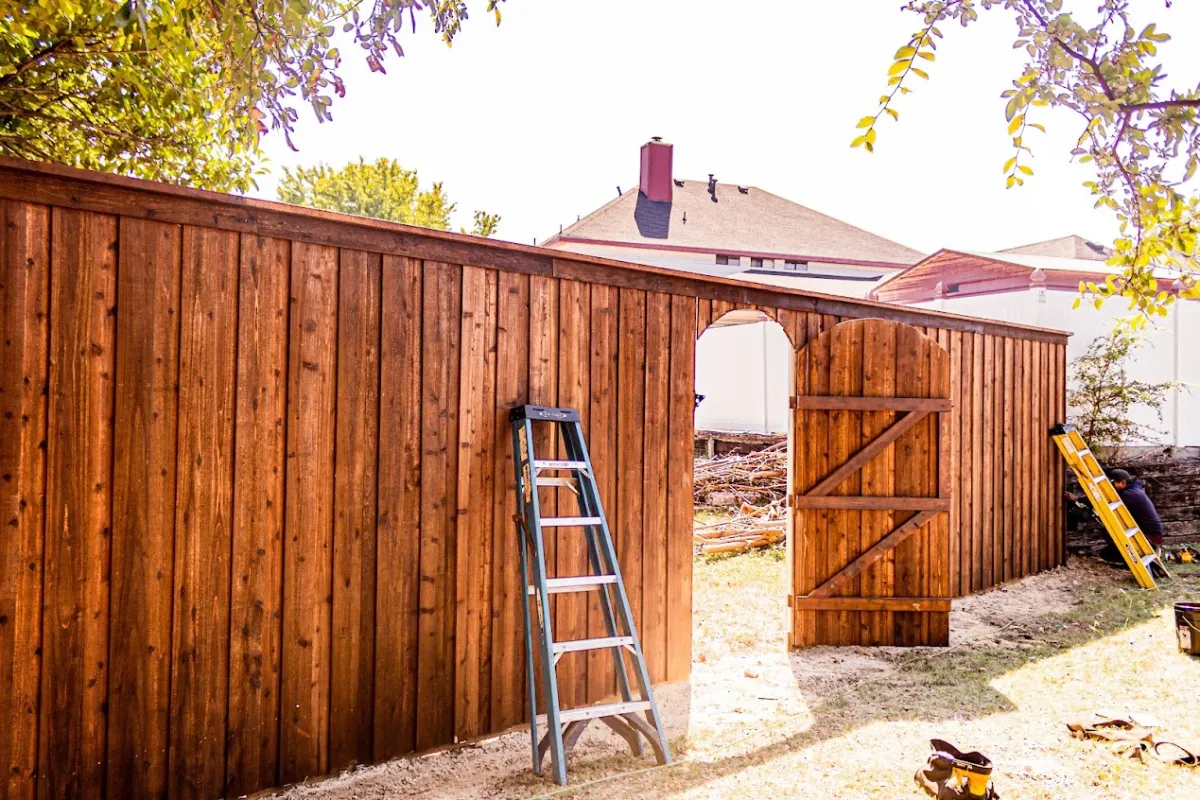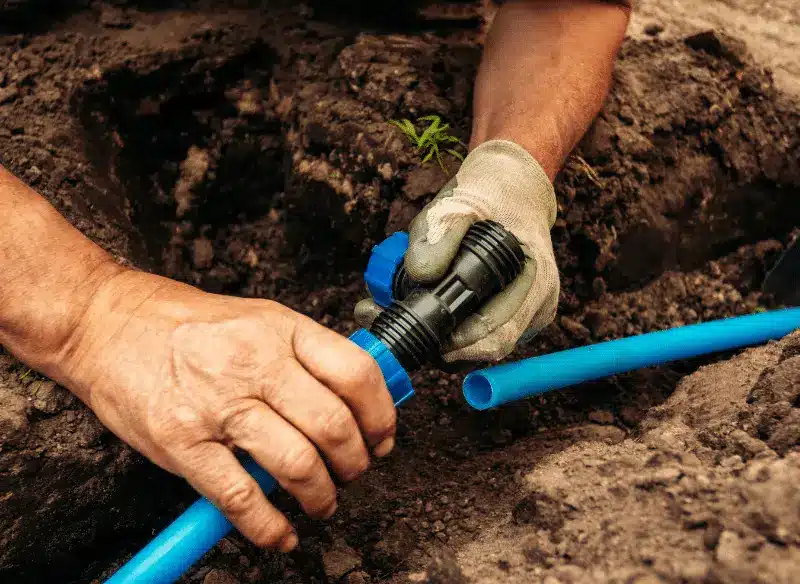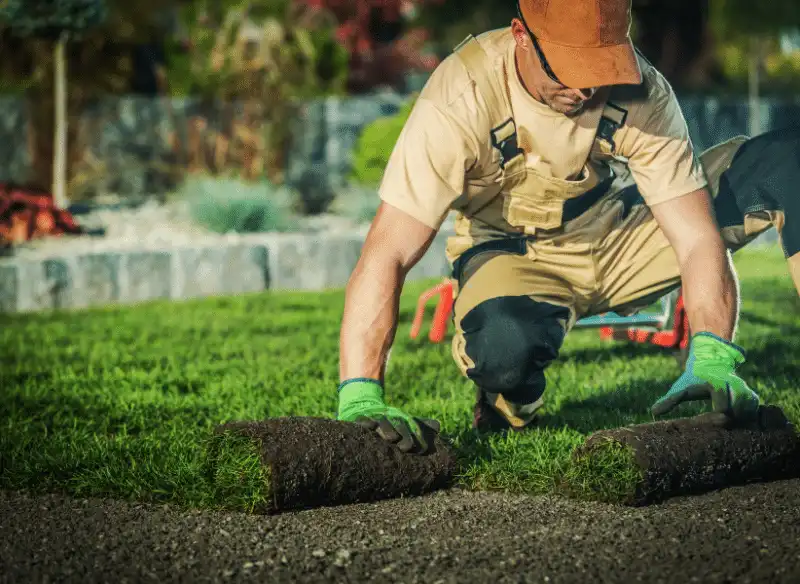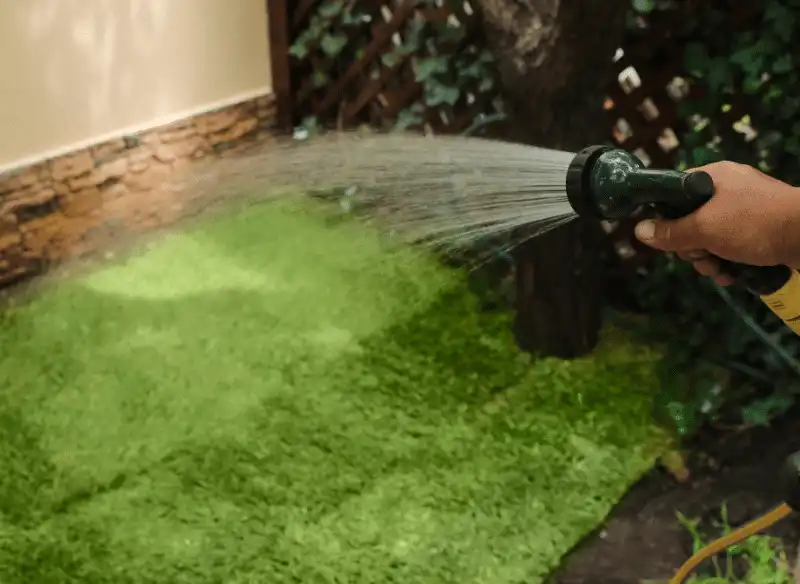So you want to maintain your fence or gate in the Dallas Fort Worth Texas area?
To ensure your fence remains in excellent condition and serves you for years to come, we have created this comprehensive fence maintenance guide. Click here for more information on our fence types.
Fence Maintenance Program
Monthly Inspection
Regular inspections are crucial to identifying potential issues early. Follow these steps every month:
- Visual Check:
– Walk along the entire length of your fence.
– Look for any visible damage such as cracks, splits, or rot.
– Check for loose or missing boards and nails. - Structural Integrity:
– Gently push against the fence to ensure it is stable.
– Check posts to ensure they are firmly in the ground and not leaning. - Gate Functionality:
– Open and close gates to ensure they are functioning correctly.
– Check for any sagging or misalignment. - Vegetation:
– Trim any plants, vines, or shrubs that are growing too close to the fence.
– Remove any debris or leaves that may accumulate at the base of the fence.
Seasonal Maintenance
Each season brings different challenges for your fence. Here’s how to care for it throughout the year:
- Spring:
– Clean the fence using a mild detergent and water. A pressure washer can be used on a low setting.
– Inspect for any damage caused by winter weather and make necessary repairs.
– Apply a fresh coat of sealant or stain if needed. - Summer:
– Check for signs of insect damage, particularly if you have wooden fences.
– Ensure your sprinkler system is not constantly wetting the fence, as excessive moisture can lead to rot. - Fall:
– Remove fallen leaves and other debris from around the fence base.
Inspect for any damage caused by summer heat and make necessary repairs.
– Apply a weatherproof sealant to protect against upcoming winter conditions. - Winter:
– Clear snow and ice away from the base of the fence to prevent moisture damage.
– Inspect for damage caused by heavy snowfall or ice storms and repair promptly.
Prolonging the Lifespan of Your Fence
- Regular Cleaning:
– Keep your fence clean from dirt, mold, and mildew. Regular cleaning prevents deterioration. - Proper Sealing:
– Apply a high-quality sealant or stain to protect the wood from moisture, UV rays, and insect damage.
– Reapply sealant or stain every 2-5 years or as recommended by the manufacturer. - Avoid Direct Contact with Soil:
– Ensure the fence does not have direct contact with the soil, as it can lead to rot. Use gravel or concrete at the base of the posts. - Prevent Water Damage:
– Ensure proper drainage around the fence to avoid water pooling.
Keep sprinklers and irrigation systems directed away from the fence. - Professional Inspections:
– Schedule annual inspections with On Point Contractors to ensure your fence is in top condition.
– Our experts can identify and fix issues that may not be visible to the untrained eye.
Maintenance Plan for Motorized Sliding Gates
Monthly Maintenance:
- Visual Inspection:
– Check for any visible signs of wear and tear, rust, or damage on the gate, motor, chain, and electrical components.
– Make sure sensors have no obstructions in front of them and that they are clear of any debris, dust, webs, or anything that may block the sensor as it may cause issues if there is anything blocking or disrupting the sensor.
– Ensure that all bolts and screws are tight and secure. - Cleaning:
– Clean the gate tracks to remove dirt, leaves, and debris. This prevents obstruction and ensures smooth movement.
– Clean the sensors if anything is blocking it.
– Clean the dirt, dust, debris, or rust of the chain with a stiff brush or a toothbrush and wipe down the rust off the chain with a dry cloth.
– Wipe down the gate and motor housing to remove dust and grime. - Lubrication:
– Lubricate moving parts such as rollers, wheels, hinges, and chains with a manufacturer-recommended lubricant. Avoid using greasy or creamy lubricants that can attract dust and dirt.
Quarterly Maintenance:
- Electrical Components:
– Inspect all electrical connections for signs of wear or corrosion. Ensure that wiring is intact and there are no exposed or rusted contacts.
– Test the remote control and other access control devices to ensure they are functioning properly. - Motor and Mechanical Parts:
– Check the motor for any unusual noises or vibrations. Ensure it is securely mounted and free from dust and debris.
– Inspect and clean the limit switches, ensuring they are free from dirt and functioning correctly.
Semi-Annual Maintenance:
- Safety Features:
– Test safety features such as photo-cellular beams and loop detectors to ensure they stop the gate if an obstruction is detected.
– Verify that all safety barriers and emergency exit functions are operational. - Rust Prevention:
– Inspect the gate for any signs of rust, particularly on metal components. Treat any rust spots with a rust converter or sandpaper and apply a rust-resistant paint. - Professional Inspection:
– Schedule a professional maintenance check-up. A qualified technician should inspect and service the motor, gears, and electrical systems, and perform any necessary adjustments.
Annual Maintenance:
- Comprehensive Inspection:
– Have a detailed inspection of all components by a professional. This includes checking the pressure and force settings of the motor, inspecting the drive sprocket, clutch, brake, and oil levels.
– Replace any worn-out bearings, rollers, or other critical components to prevent unexpected failures. - Software and Firmware Updates:
– If your gate system includes software or firmware, ensure it is up to date to benefit from the latest features and security updates.
Additional Tips:
- Weather Protection: In DFW, where weather conditions can vary, ensure that your gate system is protected from extreme weather. Use covers for the motor during heavy rains and ensure proper drainage around the gate area.
- Emergency Procedures: Keep a manual release key accessible in case of power failure or gate malfunction.
Regular maintenance not only ensures the reliability and safety of your motorized sliding gate but also extends its lifespan and reduces the likelihood of costly repairs. For professional maintenance services, always contact a qualified technician who can provide specialized care for your specific gate system.
By following this plan, you can keep your motorized sliding gate in optimal condition, ensuring it remains a secure and convenient feature of your property.
Need Repairs? Contact Us!
If you notice any issues during your inspections or need professional assistance, don’t hesitate to contact us. Our team at On Point is ready to help you with repairs and maintenance to keep your fence looking and functioning like new.
- Phone: [2147021902]
- Email: OnPointContractors@onpointdfw.com
- Website: onpointdfw.com
With proper care and maintenance, your fence will continue to enhance your property for many years to come.
Frequently Asked Questions (FAQs)
How often should I clean my fence?
The frequency of cleaning your fence depends on various factors including the type of material, climate conditions, and location. Generally, it is advisable to clean your fence once or twice a year.
Can I stain a wooden fence myself?
Yes, you can stain a wooden fence on your own. Make sure to select a stain specifically designed for outdoor use and follow the manufacturer’s instructions for application.
Should I remove vines from my fence?
If vines are causing damage or placing too much pressure on your fence, it is recommended to remove them. However, if they are not causing harm and you like their appearance, you can trim and manage them carefully.
What can I do to prevent rust on my metal fence?
To prevent rust on a metal fence, inspect it regularly for signs of rust and treat any spots promptly with rust remover or sandpaper. Applying a rust-resistant coating or paint will also offer added protection.
When should I consider replacing my fence instead of repairing it?
If your fence has substantial damage, such as severe rot or structural issues, it may be more practical and cost-effective to replace it rather than repair it extensively. Consult with a professional to evaluate the condition of your fence and make an informed decision.
How do I prevent my wooden fence from warping?
To prevent your wooden fence from warping, ensure proper installation with enough space between boards for expansion and contraction. Apply a protective sealant (preferably stain) or paint to reduce moisture absorption, and avoid excessive water and direct sunlight exposure.
Can I repair a chain-link fence myself?
Yes, you can handle minor repairs on a chain-link fence yourself, such as tightening loose wires, replacing damaged sections, or adjusting the tension. For more extensive repairs or if you’re unsure about the process, it is advisable to seek professional help.
How long can a well-maintained wooden fence last?
The lifespan of a well-maintained fence varies based on material, climate, and maintenance practices. Generally, a well-maintained fence can last between 20 to 50 years or more with consistent cleaning, repairs, and proper care.
Can I stain my wooden fence instead of painting it?
Yes, you can opt to stain your wooden fence instead of painting it. Stains penetrate the wood, enhancing its natural appearance while providing protection against UV rays and moisture. Choose a stain formulated for exterior wood and follow the application instructions.
For further assistance, visit onpointdfw.com or contact us directly. We’re here to help you maintain and enjoy your fence for many years to come.




